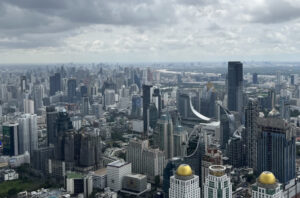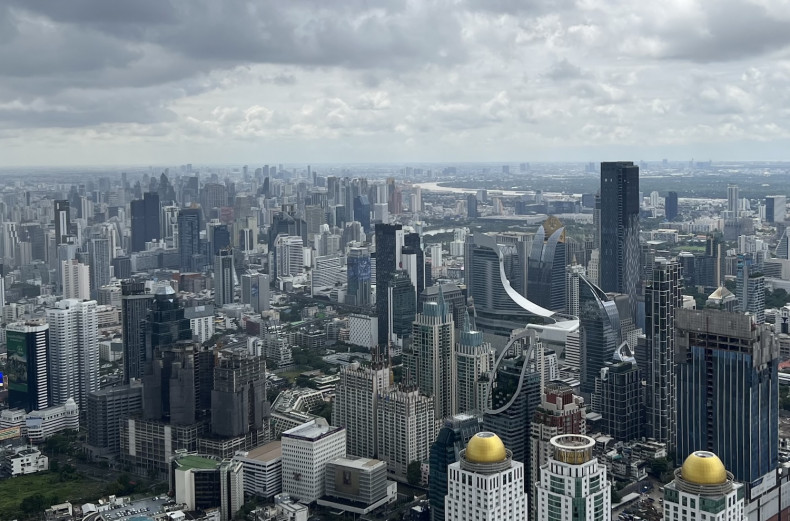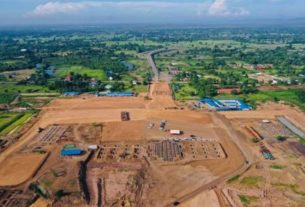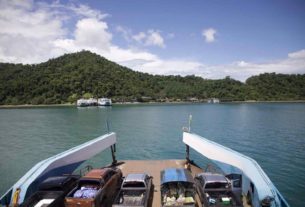
Bangkok office occupancy dips below 80% amid glut
Rate is lowest since 2004 as ‘flight to quality’ poses challenge to owners of older buildings
Occupancy in Bangkok’s office market fell below 80% for the first time since 2004 as an influx of new Grade A supply drew tenants from older towers, forcing landlords to cut rents, renovate or repurpose, according to the property consultancy CBRE Thailand.
Chotika Tungsirisurp, head of consulting and research at CBRE Thailand, said the overall occupancy rate dropped to 79.3% in the second quarter of 2025 due to the supply increase, marking the first dip below 80% since 2004.
“Unlike in 2004, when demand was rebounding from 78.9% in 2003 to 82.9% due to positive momentum, which boosted occupancy in 2005-06 to more than 85%, the decline this year reflected intense competition from a surge of new completions,” she said.
In the second quarter of 2025, supply grew by 145,814 square metres, led by One Bangkok Tower 5 (100,534 sq m) and Central Park Offices (60,000 sq m). An additional 12,000 sq m came from the renovation of the UOB Sathorn building.
“These new Grade A+ towers set international benchmarks, offering direct transit links, large retail components and sustainability credentials that appeal strongly to multinational corporations,” Ms Chotika said. “They are magnets for tenants looking to upgrade.”
Net take-up remained positive at 36,825 sq m, largely driven by relocations into Grade A non-central business district (CBD) buildings, particularly in Bangkok’s northern corridor. Insurance, conglomerates and logistics groups were among the most active.
“Companies are capitalising on favourable tenant conditions to relocate from ageing stock to high-quality projects,” she said. “This flight to quality is reshaping the market.”
Grade A non-CBD posted a net take-up of 54,387 sq m, primarily relocating within the same area, lifting occupancy from less than 65% to above 71%, according to CBRE. Grade A+ posted a positive take-up of 7,907 sq m in the quarter.
In contrast, older Grade B buildings in both CBD and non-CBD areas recorded negative net take-up as tenants downsized or relocated.
Some space was removed altogether, with three office buildings totalling 26,720 sq m converted to hotels or awaiting new uses.
“Landlords of older assets faced hard choices,” Ms Chotika said.
“They must decide whether to keep investing, repurpose for other uses, or even demolish and rebuild. Each case demands a tailored strategy.”
Many landlords are responding with rent discounts, flexible lease terms and renovations to retain tenants.
These strategies have helped retain some long-term tenants, and in some cases, attract new tenants, noted the consultancy.
Cosmetic fixes not enough
Attractive rents alone may not suffice. Tenants increasingly demand modern workplace features such as sustainability, wellness and digital readiness that only newer buildings can deliver. Older assets need more than cosmetic upgrades, she said.
CBRE expects net take-up to rise 10-15% in 2025 compared with last year, though gains will be concentrated in new Grade A and A+ projects. Older towers will continue to lose tenants until repositioned.
“The supply pipeline is accelerating the transition,” Ms Chotika said. “Bangkok’s office market is no longer about filling space. It’s about quality, efficiency and long-term adaptability.”
As market conditions favour tenants, relocating from an ageing building to a new one at competitive rental rates offers a dual advantage — better quality and cost efficiency — making it one of the most critical decisions for tenants, she said.
Tattayakorn Benjapattharaseth, senior vice-president and head of offices at the mixed-use development One Bangkok, said flexibility has become a crucial selling point in Bangkok’s competitive office market, where new supply continues to surge.
“Some companies want to relocate from older buildings to newer ones, but remain cautious about expenses,” she said. “Offering lower total costs, such as rental furniture instead of outright purchases, can help them reach decisions more quickly.”
One Bangkok has completed two of its five planned office towers, each offering about 100,000 sq m of lettable space at current rental rates of around 1,500 baht per sq m.
Tower 4 recorded an occupancy rate of 85%, while Tower 3 reached 60% occupancy, with a target of reaching 70% by the end of this month, said Ms Tattayakorn. Tower 5, slated for next year, has secured 50% pre-leasing, while Towers 1 and 2 remain under development.
Source: https://www.bangkokpost.com/business/general/3102937/bangkok-office-occupancy-dips-below-80-amid-glut



